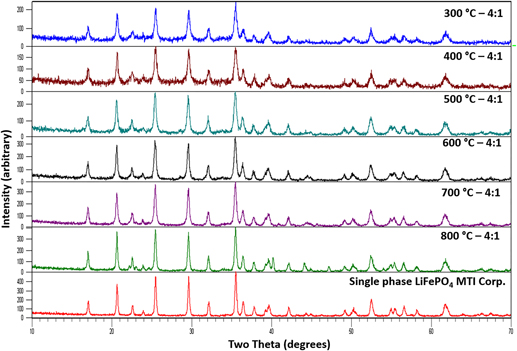Crossref Citations
This article has been cited by the following publications. This list is generated based on data provided by
Crossref.
Ribero, Daniel
Seymour, Kevin C.
Kriven, Waltraud M.
and
White, M. A.
2016.
Synthesis of NaTi2(PO4)3 by the Inorganic–Organic Steric Entrapment Method and Its Thermal Expansion Behavior.
Journal of the American Ceramic Society,
Vol. 99,
Issue. 11,
p.
3586.
Sellappan, Pathikumar
Tang, Chi
Shi, Jing
and
Garay, Javier E.
2017.
An integrated approach to doped thin films with strain-tunable magnetic anisotropy: powder synthesis, target preparation and pulsed laser deposition of Bi:YIG.
Materials Research Letters,
Vol. 5,
Issue. 1,
p.
41.
Hanif, Mehwish
Farooq, Omer
Rafiq, U
Anis-ur-Rehman, M
and
ul Haq, A
2020.
Structural, dielectric and electrical properties of Gd-substituted lithium nano-ferrites prepared by the WOWS sol–gel method.
Nanotechnology,
Vol. 31,
Issue. 25,
p.
255707.
Shih, Pei‐Chieh
Zhang, Cheng
Raheja, Harshit
Sun, Cheng‐Jun
and
Yang, Hong
2020.
Polymer Entrapment Flash Pyrolysis for the Preparation of Nanoscale Iridium‐Free Oxygen Evolution Electrocatalysts.
ChemNanoMat,
Vol. 6,
Issue. 6,
p.
930.
Penilla, Elias H.
Sellappan, Pathikumar
Duarte, Matthew A.
Wieg, Andrew T.
Wingert, Matthew C.
and
Garay, Javier E.
2020.
Bulk polycrystalline ceria–doped Al2O3 and YAG ceramics for high-power density laser-driven solid-state white lighting: Effects of crystallinity and extreme temperatures.
Journal of Materials Research,
Vol. 35,
Issue. 8,
p.
958.
Rosczyk, Benjamin R.
Lee, Sang‐Jin
and
Kriven, Waltraud M.
2022.
Comparative study of titanate syntheses by the organic steric entrapment method.
International Journal of Applied Ceramic Technology,
Vol. 19,
Issue. 1,
p.
200.
Bukka, V. V. Rohit
and
Sarin, Pankaj
2022.
Evaluation of in-situ carbon coated $$\hbox {LiCoPO}_{4}$$ for Li-ion battery cathodes.
Journal of Materials Research,
Vol. 37,
Issue. 14,
p.
2347.
Mizera, Adrian
and
Drożdż, Ewa
2023.
Properties of cobalt-doped SrTiO3 derived from two methods: the modified Pechini method and the citrate combustion method.
Journal of Thermal Analysis and Calorimetry,
Vol. 148,
Issue. 19,
p.
9947.
Hulbert, Benjamin S.
Blake, Dylan W.
Mattei, Gerard S.
and
Kriven, Waltraud M.
2024.
Isotropic negative thermal expansion in ZrW2O8 and HfW2O8 from 1100 to 1275°C.
Journal of the American Ceramic Society,
Vol. 107,
Issue. 7,
p.
4594.
